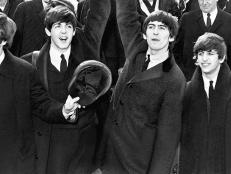Mysteries: Failed Assassination of JFK Pictures
Don examines a pin that's connected to a plot to assassinate JFK, a bizarre contraption that was designed by Max factor and a strange being that some believed was evidence of a close encounter.
Related To:
Failed Assassination of JFK
The Belmont Public Library in New Hampshire has in its collection a small pin that was awarded for an immense act of heroism. In 1950, the pin was awarded to postmaster Thomas Murphy, who pieced together several postcards that were sent directly to him from a man named Richard Pavlick, including one that said, "Soon you'll be hearing from me in a big way."
Failed Assassination of JFK
This miniscule item is connected to a thrilling tale of investigation and a devious plot that threatened to kill a member of the country’s most famous family. After getting a tip from Thomas Murphy, the police caught Pavlick in his car, staking out the church of John F. Kennedy with enough explosives in his trunk to blow up the entire block.
Max Factor
The Hollywood Museum in California displays several items that were designed by a pioneer in the glamorous world of silver-screen beauty, Max Factor.
Max Factor
In the early days of film, actors and actresses struggled with how to present themselves to the public. But then expert makeup artist Max Factor opened up the first cosmetic studio that attracted all of Hollywood's stars.
Max Factor
In the 1930s, Factor’s studio was the place to be, and fans waited outside for hours just to catch a glimpse of their favorite stars. The Hollywood Museum contains a bizarre contraption that could be mistaken for a medieval torture device; however, the device was designed by Factor to use as a beauty calibrator.
Martian Monkey
In Decatur, the Georgia Bureau of Investigation Museum has preserved evidence of a strange being that some believed was evidence of a close encounter. News of its discovery caused a phenomenal reaction in the country, sparking a quest to uncover the truth behind its bizarre origins.
Martian Monkey
On July 8, 1953, officer Shirley Brown was patrolling an isolated street in Atlanta when he came across 3 men standing over an odd beast. The creature was green, 2 feet long and had no hair. But it turned out to be a hoax concocted by those 3 men who made a bet to see if they could make the cover of the newspaper.
Natural Born Killers
In the capital city of Lincoln, the Nebraska History Museum displays a gun that triggered a terrifying series of events that gripped the nation, when 2 teenage lovers, Caril Ann Fugate and Charles Starkweather, went on one of the most horrific and infamous crime sprees in modern history.
Shakespeare's Lost Plays
It was 1796 in London when an apparent treasure trove of unpublished manuscripts seemingly written by William Shakespeare were discovered. When one of the plays, “Vortigern and Rowena,” was performed for a live audience, it was an unmitigated disaster. Edmund Malone then wrote a 400-page, scathing review, calling the play a fake due to a litany of grammatical errors and historical inaccuracies.
Shakespeare's Lost Plays
Samuel Ireland, the man who discovered the journals, refused to believe they were not actually written by Shakespeare himself and employed his son, William Henry Ireland, to disprove Malone's claim. About a week later, William Henry finally revealed to his father that he created the fake manuscripts himself.
Dymaxion Car
The National Automobile Museum in Reno, NV, displays an unconventional vehicle with a daring design that once promised to revolutionize the entire auto industry. With only 3 wheels and a teardrop shape, the car was inspired by vastly different modes of transportation.
Dymaxion Car
The Dymaxion car -- supposedly able to travel by land, sea and air -- only made its debut on the ground during Chicago's World Fair in 1933. Shortly after, the vehicle was involved in a controversial tragedy that devastated its famous inventor, Buckminster Fuller, and caused it to vanish from American highways forever.



